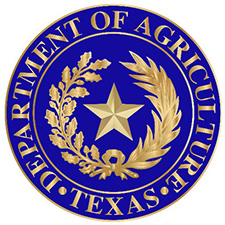As COP26 nears, activists say agriculture should be a bigger part of the agenda
The United Nations Climate Change Conference (COP26), which starts Oct. 31 in Glasgow, has been billed as a “turning point” for humanity and the “last, best chance” of averting climate disaster. And given the growing awareness of the central role that food and agricultural systems play in climate change—both as a cause and as part of a potential solution—many activists say that the sector is not as big a piece of the COP26 agenda as it should be.
USDA to spend up to $1.15 billion on rural broadband
Agriculture Secretary Tom Vilsack said Friday that the USDA would spend up to $1.15 billion to bring high-speed internet services to people living in rural communities. The money would be available in loans and grants to providers who offer service with download speeds of at least 100 megabits per second in areas that lack high-speed internet.
Today’s Quick Hits
Forced-labor investigation: The Mexican government is investigating allegations of forced labor at two tomato export firms. (Reuters)
Big growth in smart ag: A new report projects the precision-agriculture market to grow from $12.9 billion this year to $20.8 billion in 2026. (Yahoo! Finance)
Regenerative fashion: Major brands, including Eileen Fisher, Stella McCartney and Kering Luxury Group, have begun investing in regenerative agriculture for the fabrics they use. (Popular Science)
Halting deforestation: The UK is asking governments ahead of the COP26 climate talks to pledge to halt deforestation. Brazil, home of the Amazon rainforest, has yet to sign on. (Bloomberg)
Weather whiplash: Throughout the week, parts of the West Coast will go from extreme drought to a series of bomb cyclones that will bring heavy rain, flash floods and possibly hurricane-force winds (CNN).
On The Calendar
Monday
The National Association of State Departments of Agriculture hosts Tri-National Accord, through Wednesday, Arlington, Virginia. “The Tri-National Agricultural Accord is the primary opportunity for senior state and provincial agricultural officials of Canada, the United States, and Mexico to work together collaboratively on agricultural trade and development issues,” says NASDA.
USDA releases monthly Food Price Outlook, 9 a.m. ET. At present, grocery prices are forecast to rise 3 percent this year.
USDA releases weekly Crop Progress report, 4 p.m. ET.
Tuesday
House Agriculture subcommittee on research holds a hearing, “Agricultural biotechnology: 21st Century advancements and applications,” 10 a.m. ET, 1300 Longworth.
Senate Finance Committee holds confirmation hearing on nomination of Maria Pagan to be U.S. trade negotiator at the WTO, 9:30 a.m. ET, 215 Dirksen.
Wednesday
House Select Subcommittee on the Coronavirus Crisis hearing, “How the Meatpacking Industry Failed the Workers Who Feed America,” 2 p.m. ET, 2154 Rayburn.
Senate Agriculture Committee holds confirmation hearing for Rostin Behnam, nominated to be chairman of the Commodity Futures Trading Commission, 10 a.m. ET, 216 Hart.
Farm Foundation forum, “Keeping the farm together: Issues and impacts of current tax proposals,” 10 a.m. ET.
National FFA annual convention, through Saturday, Indianapolis.
Thursday
Berkeley Food Institute holds an online discussion, “Justice for Black farmers: A conversation to uproot racist policy and plant seeds of redress,” 2:30 p.m. ET.
Friday
USDA releases monthly Agricultural Prices report, 3 p.m. ET.
Oct. 31
Boo! It’s Halloween, believed to originate 2,000 years ago in a Celtic festival ahead of the Nov. 1 start of the new year, according to the History Channel. Nov. 1 “marked the end of summer and the harvest and the beginning of the dark, cold winter, a time of year that was often associated with human death.” The festival of Samhain was held on Oct. 31, “when it was believed that the ghosts of the dead returned to earth” and caused trouble and damaged crops.











